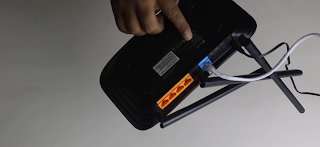Typically, whoever provides your broadband Internet line will also set up your router. However, many users prefer to do it themselves.
The primary audience of today's tutorial is those who want to configure the router themselves. Furthermore, you can quickly fix any router issue if you learn this example router configuration. You will learn how to set up a Tp-link router from this tutorial.
If you learn this method, you can set up other routers and sims similarly. Other companies' routers may be slightly different, but the process is the same.
The above image you can see is written SSID: TP-link_1452 In fact, when you search for Wi-Fi with the power line of your Wi-Fi in new condition, this name will be seen as TP-link_1452.
Then see the image above to connect this name, and the password is given at the back of the router. Connect with that. If you do not get any image or information on the back, it will be connected if you connect without a password to your router.
I'm hoping you've got it all. If everything is clear, you can now connect using the password listed on the router's back.
In the image above, you can see that you will have your router prepared along with your wifi line connection and power line.
Even after giving all these lines in the first case, your internet will not work. You must first work on the router's server to make the Internet work. Don't worry; in today's tutorial, how to work on the server will also be shared.
There is a Default Access link http://tplinkwifi.net which you can see in the above photo. So you enter this link http://tplinkwifi.net.
And if there isn't a link behind your router, this link will be either http://192.168.1.1 or http://192.168.0.1. When you click on this link, a website will open.
Take a look at the above picture and see that there is a username and password admin. So when we enter the tplinkwifi.net website, we will give the username admin and password admin.








